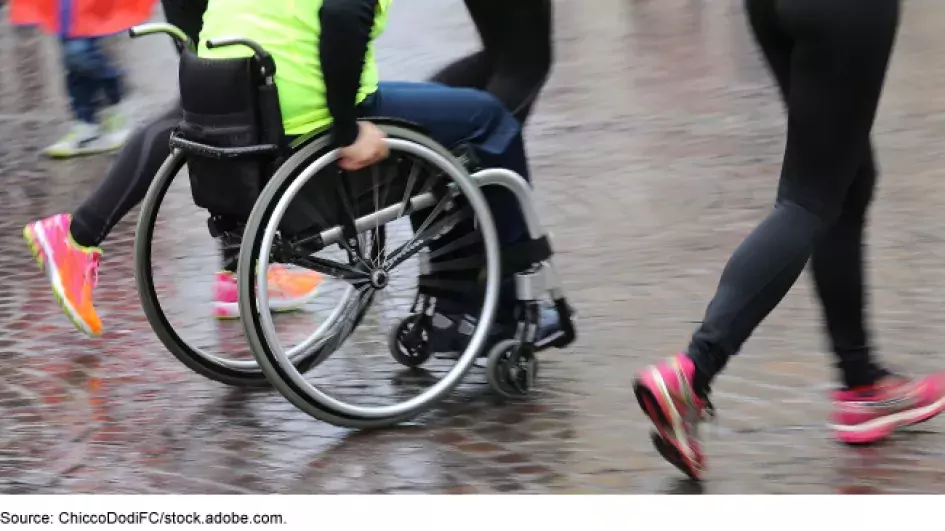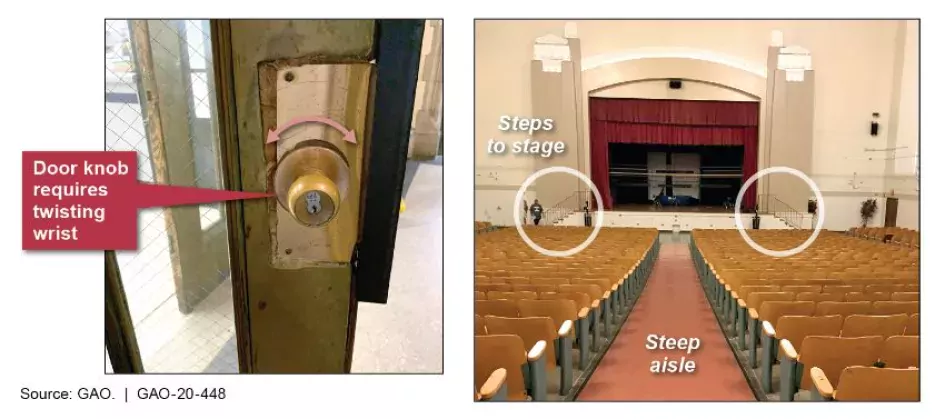For Disability Pride Month—We Highlight Our Work on Access Issues
July is Disability Pride Month—a month commemorating the 1990 passage of the Americans with Disabilities Act (ADA), which prohibits discrimination against individuals with disabilities, and recognizes that disabilities are a part of human diversity. It is also an opportunity to raise awareness about improving access and inclusion.
In today’s blog post, we take a look at some of our work on increasing accessibility for people with disabilities.
Image

Barriers exist at many public schools and school districts
Public schools not only serve as education centers for students, but also serve as voting locations or emergency shelters, among other uses. In a 2020 report, we found that two-thirds of school districts had buildings that may be difficult for people with disabilities to access.
Some of the access issues we observed were:
- Uneven ramps in parking lots, which pose a tripping hazard
- School entrances with objects, such as fire extinguishers, that stuck out into pathways which could make it difficult to maneuver
- Bathrooms without braille or raised characters to identify accessible bathrooms
Examples of doorway and auditorium barriers GAO observed in schools
Image

The Department of Justice and the Department of Education share responsibilities of ensuring public schools are in compliance with the ADA. Justice can also provide information and technical assistance on interpreting the ADA, but does not do so. Because we estimated that two-thirds of school districts have access issues, we recommended that Justice work with Education on improving accessibility at school facilities. These efforts are still ongoing.
Voters with disabilities may face challenges with early voting
An estimated 38 million U.S. voters with a disability were eligible to vote in the 2020 election. While election officials took steps to increase voter accessibility—such as providing accessible equipment (shown below) and gaining input from the disability community—voters with disabilities may still encounter barriers.
Voting equipment and associated accessibility features used in Delaware
Image

Many voters with disabilities choose to vote early. But, in our 2021 report, election officials and disability advocates reported challenges associated with early in-person voting, such as gravel in parking lots and voting equipment not being set up properly, both which can impede voting access for people with disabilities. Officials also informed us that paper mail-in ballots present challenges as some voters with disabilities may have difficulties marking them.
The Election Assistance Commission (EAC) provides resources to election officials on topics such as accessible voting equipment and partnering with disability advocates. However, we found that it does not have a process to collect their feedback, including information on what additional resources may be needed to better serve voters with disabilities. As a result, we recommended that the EAC develop a procedure to obtain and incorporate feedback to enhance its accessibility resources.
Digital tax filing accessibility could be improved
The IRS works with tax preparation companies to offer a free online tax filing program to eligible taxpayers called the Free File program. Millions of taxpayers qualify to use this program, but only a small percentage use it.
In our April report, we found that the Free File program presents many challenges for both the IRS and taxpayers—including those with disabilities. For example, if the company websites are compatible with screen reader technology for individuals who may have limited vision.
We reported on ways the Free File program can improve the taxpayer experience. For example, it can better align with guidelines that federal agencies use regarding digital services. Such guidelines would help taxpayers with disabilities access services.
Additionally, the program has not gathered information from the companies on the extent of steps they take to support access for taxpayers with disabilities using Free File websites.
Among other things, we recommended the IRS incorporate user experience to make improvements in accessibility, including relevant federal digital services requirements for users with disabilities.
- Comments on GAO’s WatchBlog? Contact blog@gao.gov.





